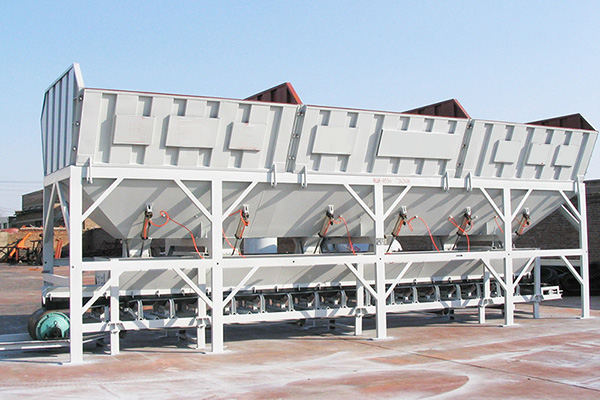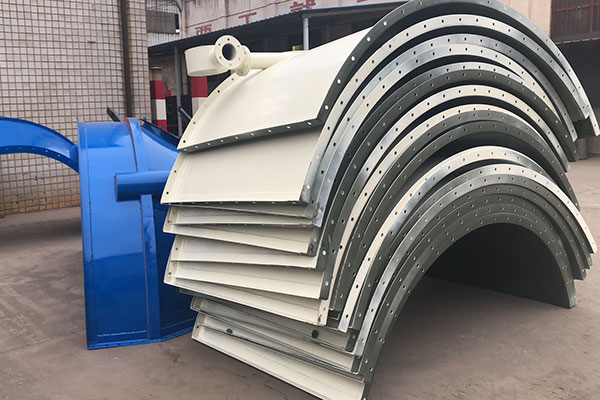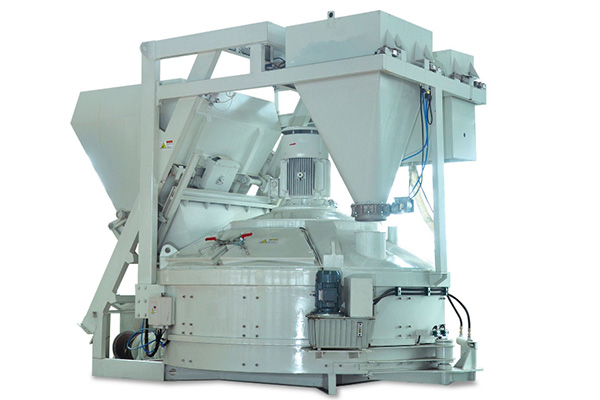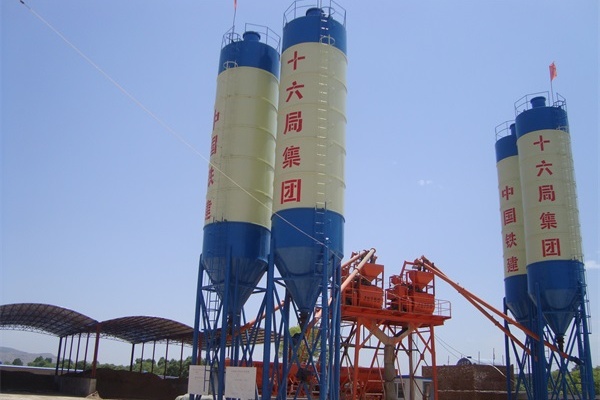Inclined Vibrating Screen
Inclined Vibrating Screen
These are the most common type of screen employed in the aggregate industry. The combination of inclined surface (15~ to 20~ and vibration produces a continuous screening process during which the fines are rapidly segregated and pass through the screen 'mat' near the feed point. Retained 'oversize' and 'nearsize' particles are transported across the deck and repeatedly presented to the screen apertures to promote high efficiency of undersize removal. The devices are relatively simple, comprising a vibrating frame that may be fitted with a variety of screening surfaces, of modest cost and capable of providing high FIG. 5.20. Screening surfaces: upper row; woven wire (square), woven wire (slots), punched plate (slots); lower row: cast polymer, punched rubber mat, punched plate or mat. necessary to adjust the aperture size since the greater thickness of the mat reduces the probability of any given size of particle passing through the screen. The aperture may be increased by between 25 and 50% compared to that of a woven wire screen. Other screening surfaces that may be encountered are punched steel plate, elongated slots, 'rod decks' and 'piano-wire' screens. Punched plate is very robust but of low open area. It may be applied to horizontal screening of larger sizes and to trommel screens. Elongated slots may be formed of woven wire, punched plate or polymer. The rectangular shape of the aperture reduces the tendency for pegging and blinding and increases the open area. Rod decks employ loosely located, transverse steel rods to create a screening surface. Vibration of the screen causes relative motion of the rods and rotation of the rods both of which oppose pegging and blinding. 'Piano-wire' or 'harp' screens employ fine, high tensile carbon steel wires under tension to form elongated 'slot' apertures. The objective is to utilize the vibration of the wires to overcome problems of blinding when screening finely sized moist materials. Clearly the use of the screen mats described above incurs some loss of precision but this must be off-set against the greater reliability and utilization (availability) of the screens. unit capacity. However, to benefit from these advantages it is most important that the screen is fed correctly, in particular that the entire width of the screen is used and that the feed rate is constant. A disadvantage is that the screen frame itself and the supporting structure must be designed to withstand the vibrational loads but enormous experience is now available. The use of an inclined screen obviously results in a greater headroom requirement and taller structures than horizontal screening equipment. All vibrating screens, by their nature, have a tendency to create noise and dust which may be mitigated by encapsulation and choice of screening surface.
The vibration of the screen can be generated by several means, e.g. eccentric rotation of a shaft, rotation of unbalanced weights or electromagnetic devices. In general, lower frequencies and greater amplitudes are used for the screening of coarser particles. Any element of the screen surface will describe an orbital motion in a plane at right angles to the screen surface.
The form of the vibration may be modified to suit the particular screening application. At its simplest, the motion is circular. However, it is also possible to design the motion to be elliptical or linear with an axis at an inclination to the screening surface which either favours transport of material (throw) or opposes transport. A positive 'throw' increases oversize transport rate and opposes 'pegging' but may impair screening efficiency by reducing the retention time of nearsize material on the deck. Alternatively, a reverse throw will reduce capacity but improve efficiency by retaining nearsize and oversize on the deck. For these reasons a great variety of vibrating screens are available, many of which are fitted with means of adjusting frequency, amplitude and direction of the motion. The position of the activator relative to the screen surface is also a variable and screens are available for which the direction of the motion changes as material progresses along the deck. The most benefit is usually obtained by employing a positive throw at the feed end, changing to reverse throw at the discharge end.
Inclined Vibrating Screen supplier
It also follows from the above discussion that material may be retained on the deck by reducing the angle of inclination of the screen. This will result in better utilization of the available screening area if applied only to the sizing of the nearsize fraction. Multiple-slope screens, sometimes referred to as 'banana-screens', are now constructed to take advantage of this fact in which the deck is formed of several elements of progressively reducing inclination. A further convenience of the vibrating screen is that the frame may be fitted with single, double, triple or even four decks to facilitate the simultaneous production of several particle size ranges. Clearly the screen area will be determined by the capacity of the deck having the smallest aperture size and the decks will usually be arranged in order of decreasing aperture size to minimize wear of the more fragile surfaces. Individual decks may be divided, that is comprise mats of two differing apertures or blank to act as a chute to transfer material within the frame.
The presence of moisture in the feed material to a vibrating screen is especially detrimental to screen performance in that it induces blinding and retards segregation of the fines. Since drying of the feed is usually too costly, a simple remedy is to destroy the cohesion of the particles by further addition of water; a process referred to as 'wet screening'. The water is added through spray bars located above the deck. This practice is most effective when screening in the range 1 to 10ram and the screen undertow proceeds directly to classifiers.








